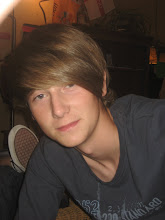Thursday, 18 June 2009
Wrong Side Of The Bed - Daniel Lucchesi (2006)
Posted by Andrew Johnson at 14:10 0 comments
Killing Time At Home - Neil Coslett (2003)
Posted by Andrew Johnson at 13:43 0 comments
The First Time It Hits - Jason Budge (2004)
Posted by Andrew Johnson at 13:41 0 comments
Tuesday, 16 June 2009
What is A Short Film?
Defined By Length
Short films usually have a duration less than your standard feature film which stands at about 90 - 120 minutes. "The Academy of Motion Pictures Arts and Science awards Oscars to short films of max length 40 minutes" (Vivienne Clark, (2007) Teaching Short Films, Page 9) . In modern education and society students make films of no more than 5 minutes in length.
Defined By Content
"The depiction of a carefully considered emotion or the capture of a particular moment" (Ibid, page 10) Short films are considered to be the equivalent of short literature story or poem. Even though they are short in length short stories still contain a narrative or a morale within the text.
Defined by Form
"The function of a short film should be recognized as multifarious." (Ibid, page 10) Short films are great when it comes to flexibility in idea and creation. Short films cross the boundaries in to all areas of film such as advertising, music, documentary and animation etc. Short films allow directors to be creative as they like.
Defined by Production
"Short sequence of moving images" (Ibid, page 10) Short film can be created through a variety of forms. They can be shot on film, digitally, created by 3D animation or hand drawn animation. The variety of forms allow directors to express themselves and their ideologies in any form they wish.
Target Audience
From my research into short films, as well as searching for short films my self, I have decided that there is a niche audience for short films. Short films are much less mainstream than Hollywood blockbusters and as a result appeal to less people. It is my understanding that the target audience for short films mainly include members of the film industry as well as people interested in art house cinema. I feel short films appeal to both genders and to individuals aged over 20. This is due to the fact that short films are more sophisticated and 'arty' and as a result don't appeal to the masses. As a result of this the mediums short films are shown through are less traditional to that of main stream films. It is my understanding that my short film will either have to be shown at specific art-house cinemas, internet viewing or television on demand eg. Virgin Shorts.
Posted by Andrew Johnson at 10:32 0 comments
Thursday, 11 June 2009
Decision
I have decided to produce a short film in fitting with brief 10. Originally I planned to create a music video due to the fact it interested me, however I changed my mind due the fact that as a possible University course I wish to take film production. As a result choosing this brief it will hopefully give me a head start for University and help develop my understanding of the processes involved in the production of films.
In addition this leads on from my skill sets that I learnt in AS media studies of which will help in the creation of my film and will hopefully progress my skills from AS to a much higher standard in A2.
After watching a few examples of music videos, short films and adverts I chose to do short films due to the fact the creative narrative and the cinematography interested me. In addition the feel of the editing and the special effects appealed to me as a challenge in which to master effectively.
Posted by Andrew Johnson at 14:50 0 comments
Wednesday, 10 June 2009
First Lesson Discussion
During our first A2 Media Studies lesson we looked at the briefs to the projects for our coursework. The main briefs which took my interest are:
- a cover for its release on DVD
- a magazine advertisement for the DVD
- a radio advertisement
- a web pop-up
- a poster for the film
- a film magazine review page featuring the film
Posted by Andrew Johnson at 10:25 0 comments



